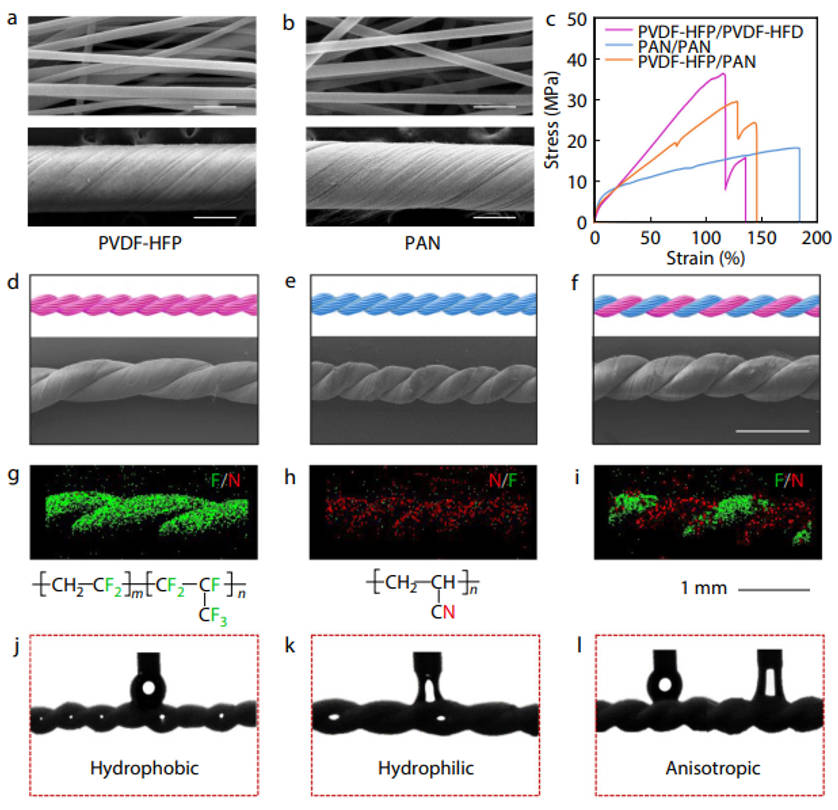All Press Releases for October 01, 2024
From beetles to bottles: innovative yarn quenches thirst with fog
From beetles to bottles: innovative yarn quenches thirst with fog
KNOXVILLE, TN, October 01, 2024 /24-7PressRelease/ -- Scientists have developed a bioinspired yarn capable of harvesting water from fog, providing an innovative solution to water scarcity in arid regions. By imitating the alternating hydrophobic and hydrophilic patterns seen in desert beetles and the water-transporting abilities of micro/nanoscale one-dimensional spider silk, this double-strand yarn accelerates droplet formation, offering a promising approach to tackling the global water crisis.Water scarcity is an increasingly urgent issue, particularly in remote and dry regions where access to fresh water is limited. Conventional methods of atmospheric water collection are often inefficient due to high energy demands or slow water release processes. Nature, however, offers solutions through organisms that have evolved highly efficient water-gathering mechanisms. In response to these challenges, there is a clear need to develop advanced materials that can improve water harvesting efficiency.
In research published (DOI: 10.1007/s10118-024-3109-5) on April 10, 2024, in the Chinese Journal of Polymer Science, scientists from the Beijing Institute of Graphic Communication and Beihang University unveiled a double-stranded yarn with alternating hydrophobic and hydrophilic properties. Inspired by the water-collecting abilities of desert beetles and spider silk, the yarn, produced using electrospinning and twisting techniques, is designed for high-efficiency fog collection, addressing the critical need for sustainable water sources.
The research highlights the development of a double-stranded yarn made from hydrophobic poly vinylidene fluoride-co-hexafluoropropylene (PVDF-HFP) and hydrophilic polyacrylonitrile (PAN) nanofibers, inspired by natural fog-collecting organisms like desert beetles and spider silk. Using electrospinning and twisting techniques, the team engineered the yarn with alternating hydrophobic and hydrophilic segments, creating a structure that mimics nature's water-harvesting mechanisms. The hydrophobic sections promote rapid water droplet accumulation, while the hydrophilic sections enhance the transportation of these droplets, allowing for faster coalescence and collection. When tested in a controlled fog environment, this yarn demonstrated a significant improvement in water collection efficiency, achieving a rate of 3.20 g·h−1·cm−2. The combination of hydrophobic water capture and hydrophilic water transport proved to be far more effective than using homogeneous yarns. This innovation presents a scalable solution, offering high performance in fog-rich environments, and could be vital for improving water access in drought-prone regions.
Prof. Yong Zhao from Beihang University, an expert in bioinspired materials, stated, "This advancement shows how biomimicry can drive highly efficient and sustainable solutions to global challenges such as water scarcity. The alternating wettability design emulates nature's precision, significantly boosting fog collection performance."
The research has broad implications, particularly for regions facing severe water shortages. The yarn's scalable and efficient design makes it ideal for use in fog-prone areas, offering a reliable source of freshwater. This breakthrough also paves the way for future innovations in water-harvesting technologies, with the potential to enhance the sustainability of atmospheric water collection systems worldwide.
References
DOI
10.1007/s10118-024-3109-5
Original Source URL
https://doi.org/10.1007/s10118-024-3109-5
Funding information
This work was financially supported by the National Natural Science Foundation of China (Nos. 22105012, 21975007, 22175007 and 52172080), Beijing Natural Science Foundation (Nos. 2242035, 2242041, 2232054 and 2232037), the National Natural Science Foundation for Outstanding Youth Foundation, the Fundamental Research Funds for the Central Universities, the National Program for Support of Top-notch Young Professionals, and the 111 project (No. B14009), the Youth Excellence Project of Beijing Institute of Graphic Communication (No. Ea202403) and the Scientific Research Foundation of Beijing Institute of Graphic Communication (No. 27170124031).
About Chinese Journal of Polymer Science
Chinese Journal of Polymer Science (CJPS) is a monthly journal published in English and sponsored by the Chinese Chemical Society and the Institute of Chemistry, Chinese Academy of Sciences. CJPS is edited by a distinguished Editorial Board headed by Professor Qi-Feng Zhou and supported by an International Advisory Board in which many famous active polymer scientists all over the world are included. Manuscript types include Editorials, Rapid Communications, Perspectives, Tutorials, Feature Articles, Reviews and Research Articles. According to the Journal Citation Reports, 2023 Impact Factor (IF) of CJPS is 4.1.
Chuanlink Innovations, where revolutionary ideas meet their true potential. Our name, rooted in the essence of transmission and connection, reflects our commitment to fostering innovation and facilitating the journey of ideas from inception to realization.
Related Link:
http://chuanlink-innovations.com
# # #
Contact Information
Chuanlink Innovations
Knoxville, Tennessee
USA
Voice: 8656606278
E-Mail: Email Us Here
Website: Visit Our Website

